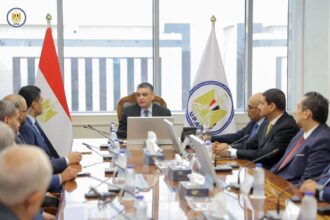The cultivated area of cotton crops this year reached 300,000 feddans, according to Minister of Agriculture and Land Reclamation Abdul Moneim El-Banna.
El-Banna noted that the ministry is currently conducting several experiments to cultivate new varieties of high productivity and quality in Egypt. The ministry has provided four new cotton varieties during the past four years.
El-Banna revealed that this year, the ministry will provide two new varieties in Egypt, Giza 97 and Giza 98, which are fit for use with modern farming methods.
Regarding the cultivation of short-staple cotton in Egypt, El-Banna explained that the ministry allows it to be planted in certain geographic areas to avoid mixing with long-staple cotton.
“The government will provide all forms of support for investors to expand the cultivation of short-staple cotton by adding new sources [countries] of seed import and technical expertise,” the minister noted. “It is important to attract new investments in the field of cultivating short-staple cotton and grant investors distinctive investment incentives to maximise the added value of Egyptian cotton and its products.”
The minister pointed out the possibility of allocating lands in Upper Egypt through an usufruct system for investors to grow this kind of cotton, on which more than 95% of the textile industry in Egypt depends.
For his part, Minister of Trade and Industry Tarek Kabil pointed out the importance of the adoption of new countries to import cotton seeds from to meet the needs of the growing industry, which depends mainly on imported cotton, especially short-staple cotton.
Kabil noted that the government shows great interest in the textile industries as a vital industry in which Egypt has significant competitive advantages, enabling it to double its exports and penetrate more markets.
The textile industry is one of five major industries that the ministry’s strategy for industrial development and foreign trade through 2020 is focused on, according to Kabil.



